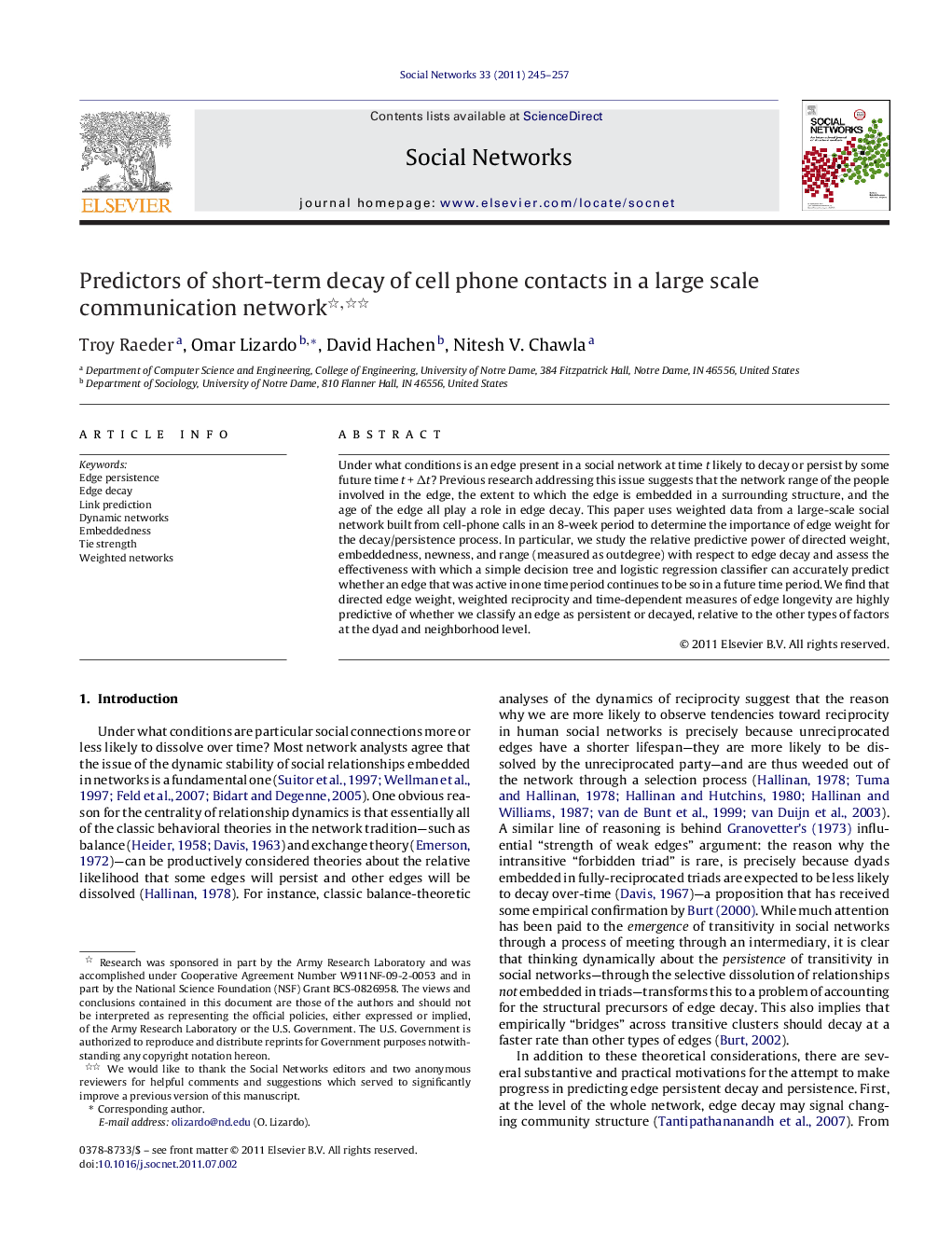| Article ID | Journal | Published Year | Pages | File Type |
|---|---|---|---|---|
| 1129351 | Social Networks | 2011 | 13 Pages |
Under what conditions is an edge present in a social network at time t likely to decay or persist by some future time t + Δt? Previous research addressing this issue suggests that the network range of the people involved in the edge, the extent to which the edge is embedded in a surrounding structure, and the age of the edge all play a role in edge decay. This paper uses weighted data from a large-scale social network built from cell-phone calls in an 8-week period to determine the importance of edge weight for the decay/persistence process. In particular, we study the relative predictive power of directed weight, embeddedness, newness, and range (measured as outdegree) with respect to edge decay and assess the effectiveness with which a simple decision tree and logistic regression classifier can accurately predict whether an edge that was active in one time period continues to be so in a future time period. We find that directed edge weight, weighted reciprocity and time-dependent measures of edge longevity are highly predictive of whether we classify an edge as persistent or decayed, relative to the other types of factors at the dyad and neighborhood level.
► We consider a social network built from millions of cell-phone calls made during an eight week period. ► We ask what factors help us predict why some social ties persist and others disappear over time. ► The main factors that we consider are tie strength, tie duration, common friends and reciprocity. ► We find that tie strength and duration are better predictors of tie persistence than other factors.
